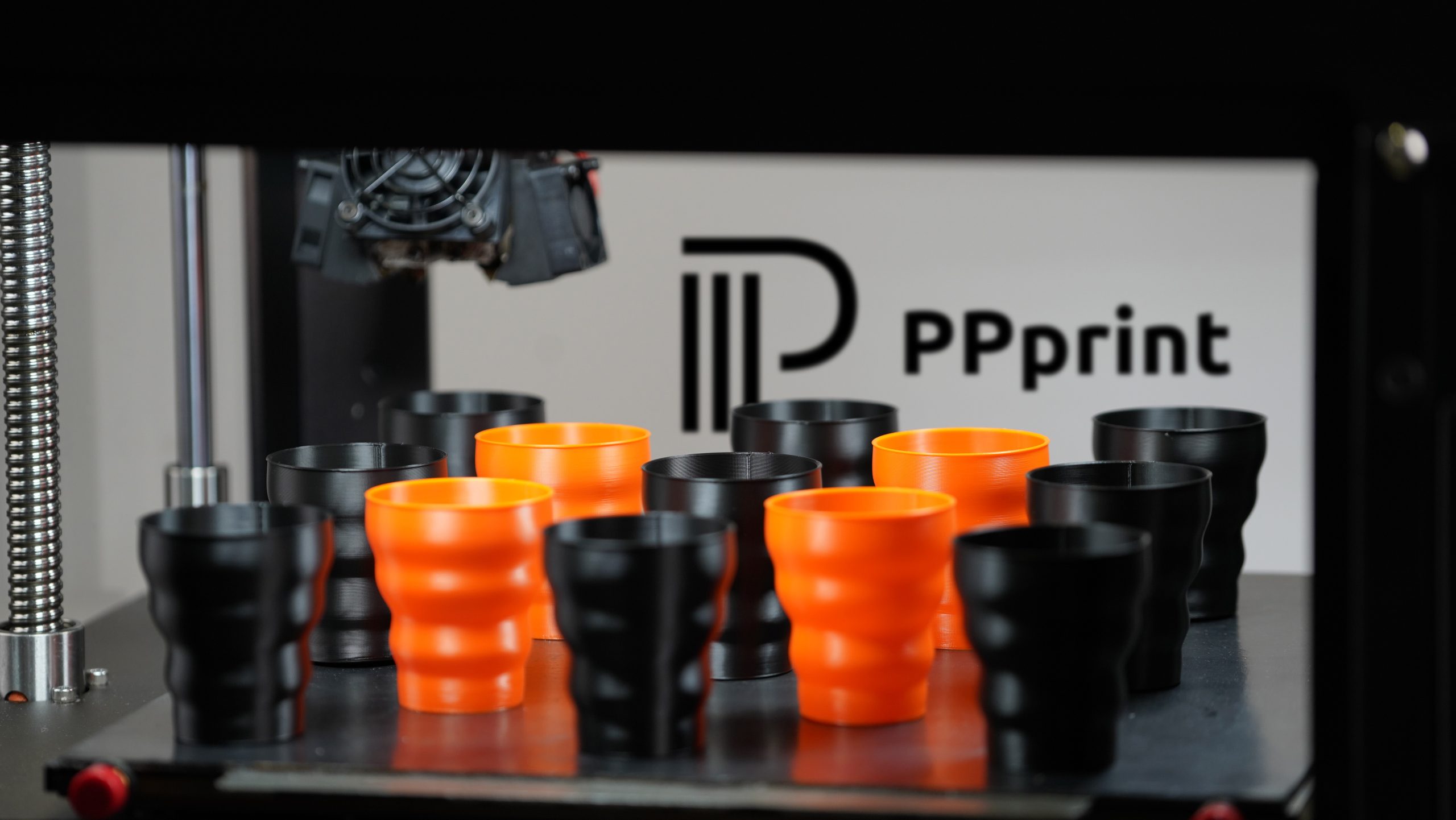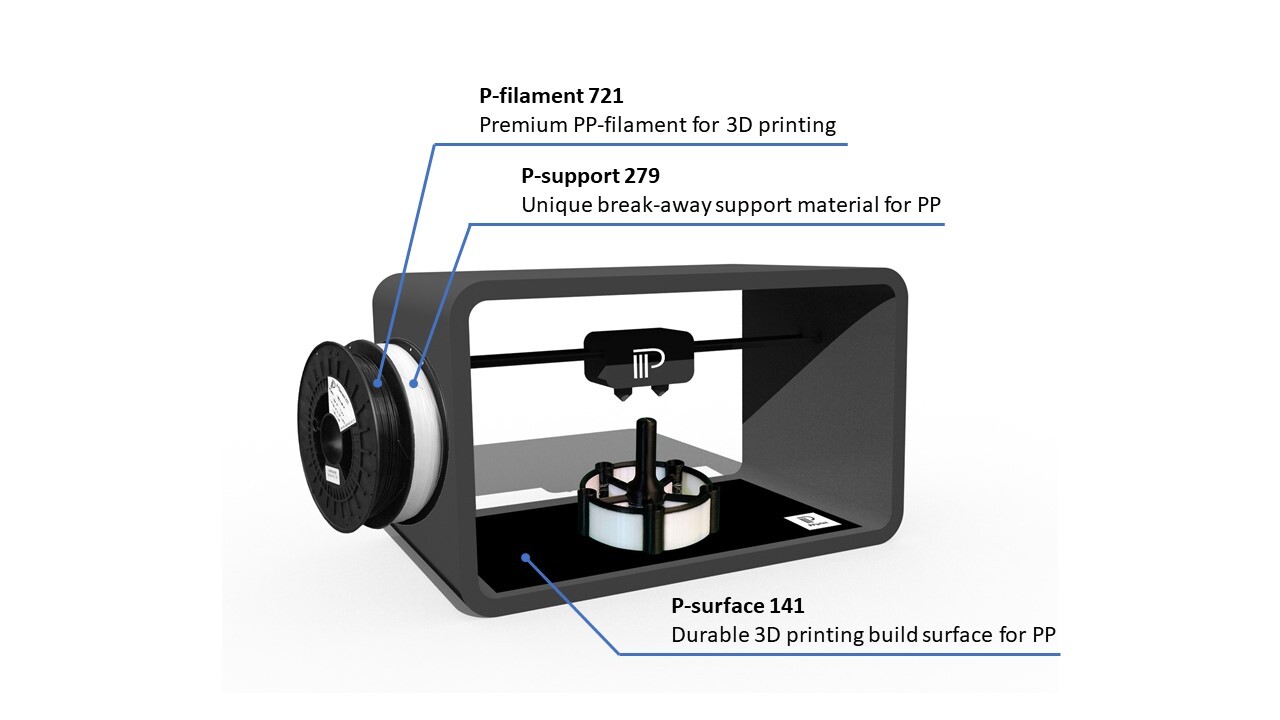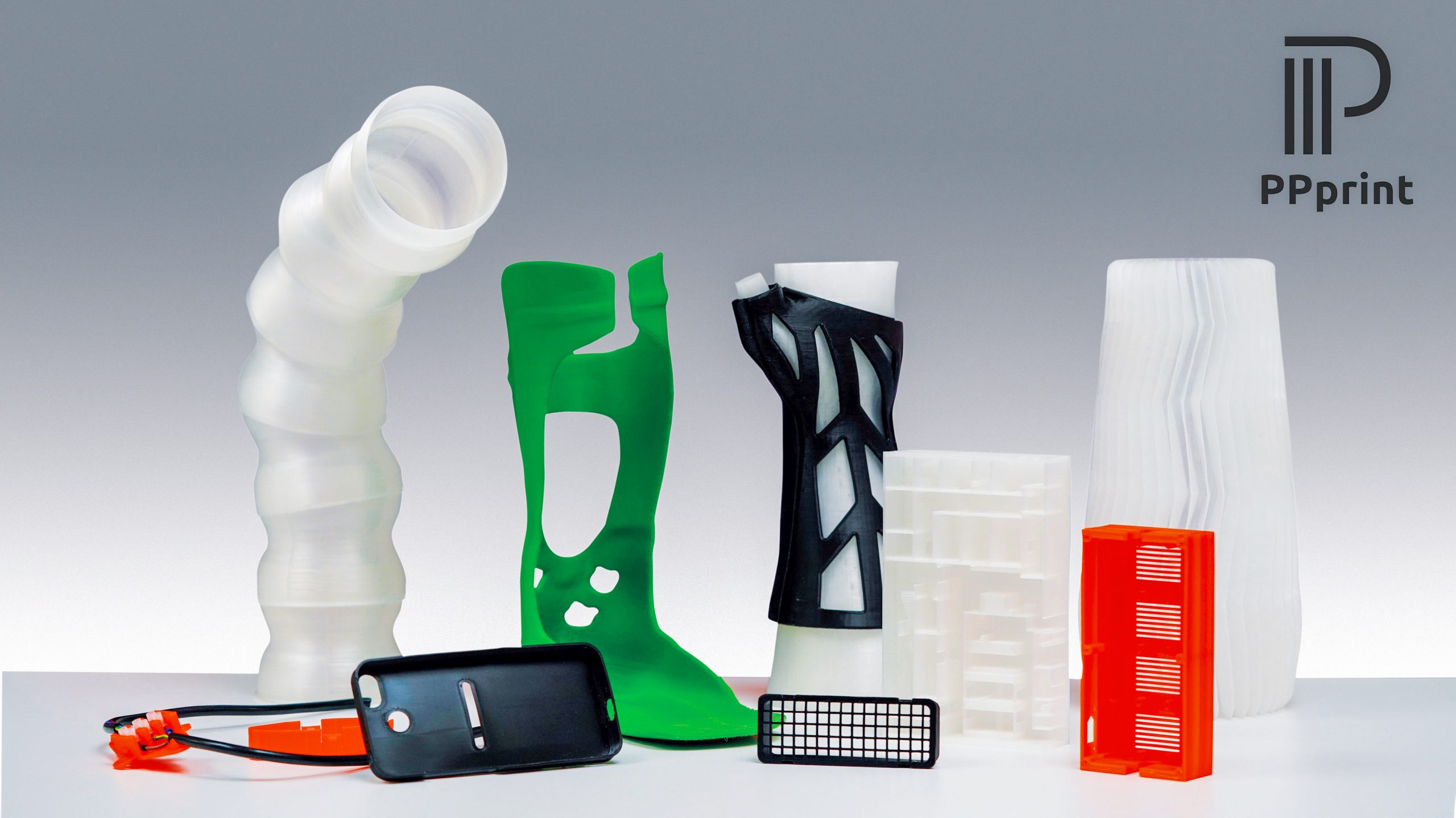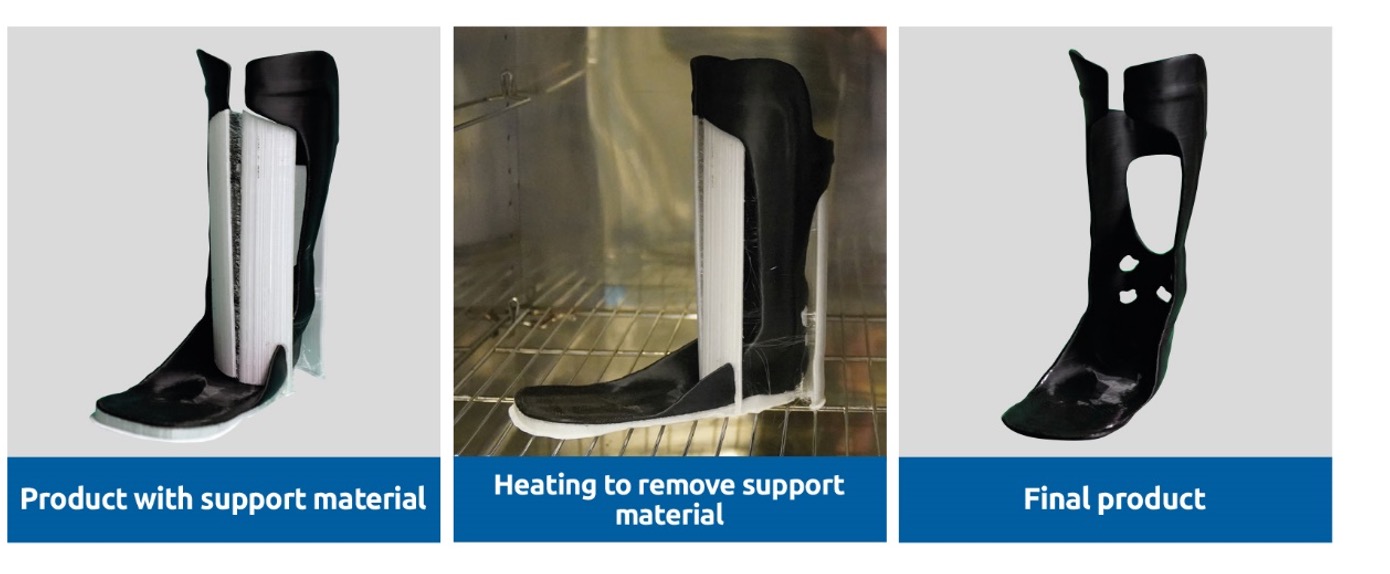Despite being one of the world’s most-consumed plastics, polypropylene (PP) is yet to be leveraged to its full extent for 3D printing, due to issues surrounding interlayer bonding, warpage, bed adhesion, and inadequate support materials.
PP 3D printing materials specialist PPprint is on a mission to change this, though. Having built up a comprehensive materials portfolio dedicated to PP since its founding four years ago, the firm also offers printing services and support to its customers in order to accelerate the use of PP within additive manufacturing.
I spoke to Product Manager Sebastian Schmidt about the benefits of PP and its advantages over other polymer materials for FDM 3D printing, as well as the firm’s ambitious plans for growing the adoption of PP 3D printing within highly demanding industries like automotive, tooling, medical technology and others.
“The great thing about PP, and why it is so widely used in injection molding and extrusion, is because of its versatile property profile,” he said. “PP is so broadly applicable that it is used as cross-industry material, enabling a wide range of applications from products in medical technology to the automotive sector.
“Due to this excellent property profile, the market share of PP in 3D printing is expected to increase significantly in the coming years.”

Why choose PP for 3D printing?
While PLA and ABS are the more commonly used polymers in extrusion-based polymer 3D printing processes, they don’t always offer the desired properties or quality demanded by a lot of targeted applications. In contrast, PP offers a number of superior properties that make it suitable for the production of reliable parts.
First off, the material can be efficiently recycled, making it an attractive choice from a sustainability point of view, while its chemical resistance to acids, alcohol and water is appealing to many industries. PP also exhibits very good break resistance and semi-flexibility, meaning parts are nearly unbreakable. Coupled with being low in density, PP is particularly suited to the production of lightweight and robust parts.
Additionally, many PP grades are compatible with sterilization processes and can be easily cleaned either manually or in a dishwasher. Skin-friendly and food-safe, PP can also be used within medical technology and food-contact applications and has the benefit of delivering an aesthetic high surface quality.
Due to the issues frequently related to inter-layer adhesion, warpage, bed adhesion and inadequate support materials, the 3D printing market with PP material is still in a developmental stage.
PPprint is aiming to change this, with its advanced PP materials portfolio, specially engineered support material, and specialized printing services. The company founders have decades of experience in working with PP and have combined their expertise to offer customers comprehensive know-how and support in implementing PP in their production processes.

PPprint’s point of difference
Although PPprint mentions well-known companies such as BASF, Braskem, Verbatim and FormFutura as its main competitors, the company says its absolute focus on PP and close contact with its customers distinguishes PPprint in the market, as it is the only company in the world that specializes exclusively on 3D printing with PP.
“We are the specialists for 3D printing polypropylene,” Schmidt said. “Since our founding in 2018, we have printed PP parts in our printing factory every day. We know the problems, the benefits and the limitations of this material, and we have specific PP print know-how, not only in terms of the material, but also in terms of using the material successfully in 3D printing.”
PPprint’s PP materials have a relatively higher tensile elasticity and interlayer bonding than other commercial PP filaments on the market, and also deliver a number of other benefits. Unlike their competitors who offer only PP filaments in a limited color range, PPprint offers a broad variety of colors and the possibility of customized colors.
PPrint offers the only break-away support material worldwide specifically developed for PP, P-support 279, which enables the creation of much more complex 3D printed shapes and designs that were previously unattainable when printing with PP. The support material enables customers to print parts with bridges, overhangs, and openings, and can be easily removed upon heating.
One common pitfall of 3D printing with PP is the material’s reluctance to stick to the printer bed surface. While using commercially available glue sticks or adhesives can solve this issue, the manual process is fairly messy, tedious and one that customers will have to repeat each time they want to print something.
To overcome this, PPprint has developed its own patent-pending print bed surface, P-Surface 141, which can be installed on customers’ 3D printers and is specifically tailored for the printing of PP. Other polymer materials like ABS, PLA, and TPU can also be printed on this 3D printing build surface, meaning customers do not need to remove it between prints and when switching between materials.
“In addition to the PPprint complete product portfolio, we offer technical support and jointly optimize, design and print PP parts with our customers”, Schmidt added. “As material developers and 3D printing experts, we provide material solutions with PP for customers to fulfill their specific needs.”
According to Schmidt, the biggest point of difference between PPprint and other material providers is its complementary ‘PP 3D printing package’ consisting of advanced 3D printing materials, an unique support material, a specifically developed print bed for PP combined with a strong material science expertise.
“We’re offering packages for all types of FDM printers,” Schmidt explained. “We want to enable printing with PP and give everybody the opportunity to print up, whether on an entry-level desktop 3D printer like a Prusa, mid-price machines like those from Ultimaker or Raise3D or higher priced industrial FDM machines.”
Achieving a circular economy with its materials is also important for the company, to give PPprint customers the opportunity to send back their printed support material, which will then be recycled by PPprint and reused.

Expanding the market for PP
Currently, PPprint’s main markets are the medical technology sector, due to the certifications the firm’s materials have received within the field regarding skin contact (DIN EN ISO 10993-5), and the automotive sector where the firm’s capabilities are deployed mainly for functional prototyping purposes, such as for german automotive companies. The company is also active in the tooling industry as a result of its broad property profile, as well as in the field of consumer goods and other industries that make use of functional prototyping.
“Especially during the Covid-19 pandemic the demand increased even more significantly, we didn’t have a lot of customers before in the medical technology field and now we have probably 60 percent of our customers coming from the MedTech field because the material is perfectly suited to these applications,” said Schmidt. “I think the medical technology field will significantly increase its use of PP, there is no way around it.”
PPprint’s support material, which has a similar print profile and properties as its PP filament, allows high customization of such applications to be effectively functional for patients while providing optimal mechanical properties.
Looking at how the adoption of PP can be increased throughout these sectors and beyond, Schmidt believes there will be some optimization on both the hardware and software side to further improve the printability of PP and therefore open it up to more applications and customers.
“Regarding the software side and slicing, you can optimize how the printheads are driving, which is a project we are currently working on, but also you can think about optimizing the nozzle form for the specific material,” he explained. “Progress will be made there definitely in the future, but that doesn’t mean you cannot achieve great results already.”
Going forward, PPprint is aiming to provide its PP materials worldwide and has now announced product availability in North America, India and China, as a means of bolstering its existing European market. Increasing the availability of its materials in new markets worldwide is the next step in the firm’s growth trajectory, Schmidt said.
“We are a research-driven company, and we have many research projects ongoing that will see us release better-reinforced materials specifically optimized for 3D printing, such as glass fiber, calcium carbonate or other fillers”, he explained. “Also speed is a key issue we are looking how to improve PP printing, such as creating a material that can be printed at a higher speed, for example.
“Our goal is growth, and as PP has started to grow in the market in the last years, the interest has become higher, and we are trying to be part of this movement. PP will definitely be one of the materials that will have a significant share in the 3D printing market.”

Subscribe to the 3D Printing Industry newsletter for the latest news in additive manufacturing. You can also stay connected by following us on Twitter and liking us on Facebook.
Looking for a career in additive manufacturing? Visit 3D Printing Jobs for a selection of roles in the industry.
Subscribe to our YouTube channel for the latest 3D printing video shorts, reviews and webinar replays.
Featured image shows polypropylene parts 3D printed by PPprint. Photo via PPprint.



